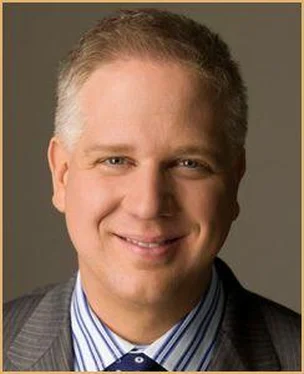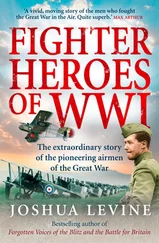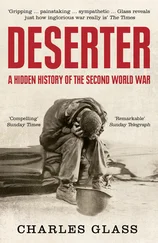His commander just shrugged. “Let’s see what it gets us.”
Camp X-Ray
Guantanamo Bay, Cuba
November 28, 2002
Sergeant Romeo called Sergeant Lisa Smith and said, “Get 063. It’s been over a week. We’re ready.”
The interrogation room was musty. Romeo directed Smith to place the blindfolded prisoner in the swivel chair in the center of the empty room with the air conditioner set at maximum blast.
After fifteen minutes of silence, Romeo removed Qahtani’s blindfold. “Take a look at these.”
On the table Smith had laid out pictures of each of the hijackers. Qahtani looked down and then quickly looked away.
Romeo paced behind Qahtani. “Go ahead. Look at your successful brothers. You failed them, didn’t you, Mohammed al Qahtani?”
Romeo watched as Qahtani visibly reacted to his name. Now we’re getting somewhere , he thought. He exchanged glances with Smith, who was now stationed directly in front of Qahtani.
Smith pointed to the Arabic words she’d written on the chalkboard in front of Qahtani: Liar, Coward, Failure .
“This is you!” she shouted.
Qahtani closed his eyes and shook his head. “Na’am.” No .
Romeo leaned in from behind him and shouted into his ears.
“Look at the pictures, Qahtani! You are the twentieth hijacker! Tell me about your training! Tell me about your commanders! Where is bin Laden?”
Qahtani jumped at Romeo’s voice. He looked down at the pictures and began to quietly sob. Romeo knew he must be feeling guilty for not completing his mission. Guilt was something he could use.
“Who was your leader?”
“Osama bin Laden.”
Romeo stopped. For the first time in nearly a year of captivity, prisoner 063 had provided a truthful answer.
“Why did you go to Orlando?”
“I wasn’t told the mission.”
“Who was meeting you?”
“I don’t know.”
Romeo spun around and slammed his hands on the table, the carefully spread photos bouncing into the air and landing askew, some skittering to the floor.
“Who was on the plane with you?”
“I was by myself.”
“You’re wasting my time!” he lied. The truth was that these answers were, for the first time, getting them somewhere.
“Give me one name! One name of someone who trained you!”
Qahtani looked up, tears streaming down his face.
“I have to use bathroom. Please.”
“One name!”
“Abu Ahmed al-Kuwaiti. Taught me Internet.”
“Internet? You’re going to fly an airplane into the White House and you give me the name of your tech support guy?”
Romeo walked out of the room, calling over to Smith. “I’m done with him. Make him go to the bathroom in the bottle in front of you.”
Returning to his cube, Sergeant Romeo quickly entered this new name, al-Kuwaiti, into the database: 063 claims Abu Ahmed al-Kuwaiti taught him how to use the Internet. Follow up with Defense and Central Intelligence Agencies .
Islamabad, Pakistan
Seven years, nine months later: August 4, 2010
CIA paramilitary operative “Ron” listened intently to the voice on the intercept.
For years, Ron and his teammates had been trolling for any usable scrap of information—but, like the tip lines the police use after a serious crime, most of the information they’d received was only marginally useful at best. Ron was on the lookout for names of highly placed operatives or mentions of weapons of mass destruction. But long ago, when the hunt for bin Laden had first begun, they’d decided that messengers would help lead to the ultimate quarry.
“We’ve got someone talking about a courier!” Ron said to the small group huddled in the plywood-paneled communications room of the safe house.
“What’s the name? We need a name!” the station chief answered.
“He’s calling him Sheik al-Kuwaiti.”
“That’s got to be the same guy.”
“I’ve got his number and recorded voice. We’re triangulating his position right now,” Ron confirmed, simultaneously relaying the information and coordinates to CIA headquarters in Langley, Virginia.
“Abbottabad, Pakistan,” Ron reported. Quickly the satellite spun to the location on the outskirts of the capital of Islamabad. It was a large compound framed by a trapezoidal wall.
Looks fit for a sheikh , Ron thought to himself.
Abbottabad, Pakistan
May 2, 2011
2:00 A.M.
The point man from Navy SEAL Team Six’s Red Team had rehearsed it a thousand times, but he was still shocked when he saw the unmistakable face of Osama bin Laden staring right back at him.
The SEAL fired his Heckler & Koch 416 carbine as bin Laden dove back into his bedroom. While the SEAL’s index finger reflexively squeezed the trigger, he thought about Jeremy Glick and the brave passengers on Flight 93, all those who had perished in the 9/11 attacks, and all those who had come before him in the wars.
Stepping into the bedroom, he saw that bin Laden was on his back, two of his wives shouting at him. A teammate shot one of the women in the leg and pushed them away. Another pumped two more rounds into bin Laden’s heart.
The point man made the call over his radio: “Geronimo, Geronimo, Geronimo!”
Osama bin Laden was finally dead. And while it may have been a Navy SEAL’s bullet that struck the fatal blow, it was a long-ago airport encounter between a young Saudi extremist and Jose Melendez-Perez, a veteran who continued to serve his country, that first sealed his fate.
This story is dedicated to all of the American heroes who’ve fought in the War on Terror. Melendez-Perez is a perfect example of how an ordinary person can make an extraordinary difference, but he’s not the only one. Each of us has the opportunity to prove that every single day.
About the Writing of This Book
This book comprises twelve stories that took place over a period of about 230 years. Not one person alive today was alive when even half of these events actually took place. That means we are left with history books, biographies, oral accounts and, in some cases, court transcripts and official reports to tell us what happened. Like anything that spans so much time and, in some cases, is so controversial, these accounts often conflict with each other. It is up to all of us to read all of the evidence and discern what is fully true, what is exaggerated, and what is a lie.
This section is meant to help you better understand the research and writing process for each story, including any key decisions we made regarding major facts, characters or scenes. A chapter-by-chapter accounting is below, but there are also a few things that apply to the entire book that I want to point out.
1. We sometimes modified quotations for clarity. This mainly applies to quotes from the revolutionary period, but we occasionally modified more modern quotes as well if we felt that they left the reader confused. We tried to be as delicate as possible and we never changed the meaning of any direct quotations.
2. In some cases we imagined characters or scenes. Whenever we did this we were careful to ensure that nothing we created contradicted anything that we knew to be true from the historical record.
3. Dialogue and character thoughts were often imagined based on the historical record. None of this dialogue contradicts anything about the characters or story that we know to be true.
Chapter 1: Jack Jouett: The Ride That Saved America
Most of the facts used to create this story came from the following sources:
“Charles S. Yordy, III: The Pennsylvania Line Mutiny, its Origins and Patriotism.” Unearthing the Past: Student Research on Pennsylvania History , Pennsylvania State University. http://www.libraries.psu.edu/psul/digital/pahistory/folder_2.html.
Читать дальше












